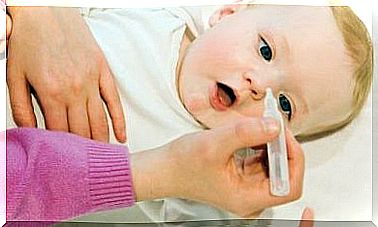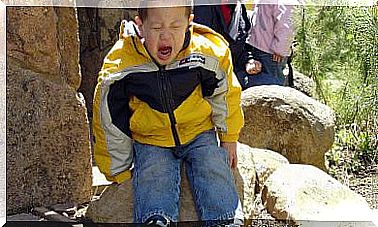The Neck Reflex: Its Importance In Child Development

One of the first things a pediatrician pays attention to when a baby is born is reflexes. This ability to adapt to the environment will depend on the control that the baby has over his body.
These automatic responses are divided into two types: primary reflexes and secondary reflexes. Know the neck reflex, which is often among a child’s most important primary involuntary responses.
Neck reflex: what is it?
The neck reflex, also known as the tonic neck reflex, can be seen when a relaxed child turns their face to one side and their arm stretches out. The other arm is flexed at the elbow, in an appearance of defense, or as pediatricians call it, in a fencing position.
It is worth noting that this reflex, in the arm where the child is looking, the hand remains open. On the contrary, in the flexed arm, the small hand is in the form of a fist, squeezing strongly. This involuntary response can be seen on both sides of the child’s body.

Types of neck reflex
Within the neck reflexes it is possible to find two types:
- Asymmetric reflex: this involves the child turning his head to one side and instantly extending his extremity and arm to the same side. Correct development of this reflex stimulates the child’s hand-eye coordination.
- Symmetrical reflex: This type of reflex is a response that integrates as the baby develops and disappears between the eighth and eleventh month of life. It serves as a precursor to the crawling process and allows the child to face the challenges of knowing how to control the effects of gravity.
Neck reflex overview
The general aspects of this type of autoresponder can be summarized as follows:
- The baby is not born with this reflex. It develops as the child grows.
- It arises as a result of the integration of other reflexes, being essential in the crawling process and visual acuity.
- It considerably increases the child’s muscle tone, favoring hand-eye coordination.
- It is clearly evident when the child is supported on his knees and hands, rocking back and forth or vice versa.
- Disappears around the sixth month of life.
A difficulty in correctly integrating the neck reflex will cause problems in gross and fine motor development, laterality and vision. For that reason, it’s best to let it develop properly without speeding up the crawling or walking process.
Neck reflex benefits
One of the most important benefits of an adequate evolution of the neck reflex has to do with preparing to crawl. Other benefits are:
- Independence of extremities for crawling.
- Improved muscle tone in the back and neck area.
- It stimulates the relationship with gravity, helping the baby to lift the body supported on the knees and hands.
- Allows cross-movements to be performed.
- It encourages the development of focus and vision, as well as the interaction between them.
- Allows a good posture when sitting, giving freedom to head movements.
Undoubtedly, an indispensable reflex that disappears when walking

Signs that the neck reflex is still active
Otherwise, if it remains active, it will serve as a symptom of immaturity in the nervous system, affecting the development of common functions. Symptoms that the neck reflexes remain active are:
- Poor posture when sitting; babies usually lie on the chair or lie flat on the table.
- It is possible to diagnose the child with hyperactivity syndrome or attention deficit.
- Generalized weakness in legs and arms.
- Lack of synchronization when crawling.
- Muscular hypotonia, resulting in slow children with difficulty in vision, focusing and precision.
- Dyslexia or difficulty in learning to read and write.
In short, neck reflexes will be necessary for your child. Help him to overcome each stage of his development with love and persistence, but above all knowing each aspect of the process.









